
Maikal Kujur
Department of General Surgery Jawaharlal Nehru Medical College and Hospital, Aligarh Muslim University, Aligarh, Uttar Pradesh, India.
*Corresponding authors: Maikal Kujur, Department of General Surgery Jawaharlal Nehru Medical College and Hospital, Aligarh Muslim University, Aligarh, Uttar Pradesh, India.
Received: September 22, 2022
Accepted: June 28, 2023
Published: July 12, 2023
Citation: Maikal Kujur (2023). “Impact of The Covid-19 Pandemic on Surgical Training of Junior Residents- In A Tertiary Care Centre In Jnmch, Amu, Uttar Pradesh, India”. Clinical Research and Clinical Case Reports, 4(1); DOI: http;//doi.org/07.2023/1.1057.
Copyright: © 2023 Maikal Kujur. This is an open access article distributed under the Creative Commons Attribution License, which permits unrestricted use, distribution, and reproduction in any medium, provided the original work is properly cited.
Covid-19 pandemic was and is very brutal and had a devastating effect on all aspects of human life. With over 21.9 crore cases and over 45.5 lakh deaths worldwide; with over 3.36 Crore cases and over 4.46 lakh deaths in INDIA till September 2021, had broken the backbone of the world in every aspect of life [1,3-5].
Introduction:
Covid-19 pandemic was and is very brutal and had a devastating effect on all aspects of human life. With over 21.9 crore cases and over 45.5 lakh deaths worldwide; with over 3.36 Crore cases and over 4.46 lakh deaths in INDIA till September 2021, had broken the backbone of the world in every aspect of life [1,3-5].
Covid-19 is a member of the Coronaviridae family. Many Corona viruses of humans and other animals exist in nature. The term corona signifies crown-like surface projections on the virus. Covid-19 Corona virus has the largest genome for any ribonucleic acid (RNA) virus described so far. Corona viruses were mostly implicated in causing respiratory infections like the common cold. A new infectious disease called severe acute respiratory distress syndrome (SARS) first emerged in Guangdong province of PR China in November 2002 by a virus named SARS Coronavirus [1,2].The current Covid-19 virus is labelled as novel coronavirus SARS-nCoV-2 and is one of seven types of Corona viruses that cause severe diseases like the Middle East respiratory syndrome (MERS) and sudden acute respiratory syndrome (SARS) [1]. It started as an outbreak in Wuhan, China, in December 2019. The outbreak quickly spread around the world, wreaking devastation along all the dimensions of human life. Covid-19 is predominantly presented as a respiratory tract infection, but its pathogenicity is seen across all human organ systems and is currently wreaking havoc across nations. It is a positive sense stranded RNA virus and can serve as messenger RNA in the infected cell culminating in its rapid spread and has turned into a pandemic [2-5].
Till March 2020, India was one of the 50 countries that identified patients who tested positive for COVID-19. One day curfew was imposed in the country on March 22, 2020, to warn the people about the danger the country was going to face. The government of India announced a nationwide lockdown for 21 days from March 25, 2020, with a subsequent second, third and fourth lockdowns. This was declared the 1st Wave of the COVID-19 Pandemic [2-5].
The second wave of COVID-19, which began around 11 February 2021, has hit India very hard with the daily cases reaching nearly triple the first peak value as of April 19, 2021. There was a steep decline in cases in July 2021, and most services resumed sequentially from September 2021 [2-7].
Impact (reduction) of teaching-Training of Surgery resident Doctors have been reported in many studies in the past (without co-relating to the Surgery services-teaching services data) [8-14].
Methods
A retrospective observational study was conducted between December 31st 2021 to January 31st 2022, to analyse the correlation between Surgery residents (30 residents; 10-1st Year, 10-2nd Year and 10-3rd Year) satisfaction data (based on on-hand surgical training, teaching services, perceived mental and perceived physical stress) to Surgery services-teaching services data (Outpatient department (OPD), Surgical emergency services, Surgical patient admission to ward, Elective surgeries, Seminars and Conferences) during Pre covid, Covid phase 1, Covid phase 2 and Post covid phase of JNMCH, AMU, Aligarh, Uttar Pradesh, India, a tertiary care hospital.
Pre covid, Covid 1st wave phase, Covid 2nd wave phase and Post covid phase three month Surgery services-teaching services date was obtained and Mean per-monthly data (3 month data/3) was calculated; Variables were: Number of Outpatient Department (OPD) patient attended, Number of Surgical patients admitted to the ward, Number of Elective surgeries done, Number of Emergency Surgical operation done, Number of Seminars occurred and Number of Conference organized during Pre covid, Covid phase 1, Covid phase 2 and Post covid phase of JNMCH, AMU, Aligarh, Uttar Pradesh, India, a tertiary care hospital.
30 Surgery residents were chosen using the simple random sampling technique consisting of 10:1st Year, 10: 2nd Year and 10: 3rd Year General Surgery Residents.
The questionnaire form was made. The questionnaire involved 4 questions with the option to choose 1 to 5 scores based on their experience during Pre covid, Covid phase 1, Covid phase 2 and Post covid phase regarding on-hand surgical training, teaching services, perceived mental and perceived physical stress at JNMCH, AMU, Aligarh, Uttar Pradesh, India.
All 30 chosen Surgery residents were asked to answer the questionnaire in written format.
Following were the Questions:
Table 1.1 Questionnaire format for Surgery Resident satisfaction assessment in different COVID phases.
|
Name Of Resident |
Date |
|
Year of Resident |
Signature |
|
1: Kindly choose your rating based on on-hand training: |
(Min=1, Max=5) |
|
A. Kindly rate your experience in Pre covid phase |
|
|
B. Kindly rate your experience in Covid 1st Wave phase |
|
|
C. Kindly rate your experience in Covid 2nd Wave phase |
|
|
D. Kindly rate your experience in Post covid phase |
|
|
|
|
|
2: Kindly choose your rating based on satisfaction by teaching-training services: |
(Min=1, Max=5) |
|
A. Kindly rate your experience in Pre covid phase |
|
|
B. Kindly rate your experience in Covid 1st Wave phase |
|
|
C. Kindly rate your experience in Covid 2nd Wave phase |
|
|
D. Kindly rate your experience in Post covid phase |
|
|
|
|
|
3: Kindly choose your rating based on Perceived Workload Stress: |
(Min=1, Max=5) |
|
A. Kindly rate your experience in Pre covid phase |
|
|
B. Kindly rate your experience in Covid 1st Wave phase |
|
|
C. Kindly rate your experience in Covid 2nd Wave phase |
|
|
D. Kindly rate your experience in Post covid phase |
|
|
|
|
|
4: Kindly choose your rating based on Perceived Mental Stress: |
(Min=1, Max=5) |
|
A. Kindly rate your experience in Pre covid phase |
|
|
B. Kindly rate your experience in Covid 1st Wave phase |
|
|
C. Kindly rate your experience in Covid 2nd Wave phase |
|
|
D. Kindly rate your experience in Post covid phase |
|
Mean of all 4 answers in all 4 phases of all 30 Surgery residents was calculated to be co-related to the Mean Surgery services-teaching services data of respective phases.
Statistical analysis was done using SPSS 25.0.
Results:
Table 2.1 Pre covid, Covid 1st wave phase, Covid 2nd wave phase and Post covid phase Mean Surgery services-teaching services per-monthly data (3 month data/3).
|
Phase (Per month average data of 3 months duration) |
Elective Surgeries |
OPD Services |
Ward Admission* |
Emergency Surgeries |
Seminars |
Conferences |
|
3 months Before Covid 1st wave |
991 |
6650 |
1265 |
365 |
100 |
4 |
|
1st Wave |
12 |
75 |
25 |
75 |
0 |
0 |
|
2nd Wave |
335 |
1670 |
562 |
167 |
40 |
1 |
|
3 months after 2nd Wave |
727 |
5921 |
1021 |
287 |
100 |
3 |
Ward Admission*: Does not include the covid patients admitted during Covid Pandemic Waves.
Figure 1.1 OPD Services in Pre covid, Covid 1st wave phase, Covid 2nd wave phase and Post covid phases.
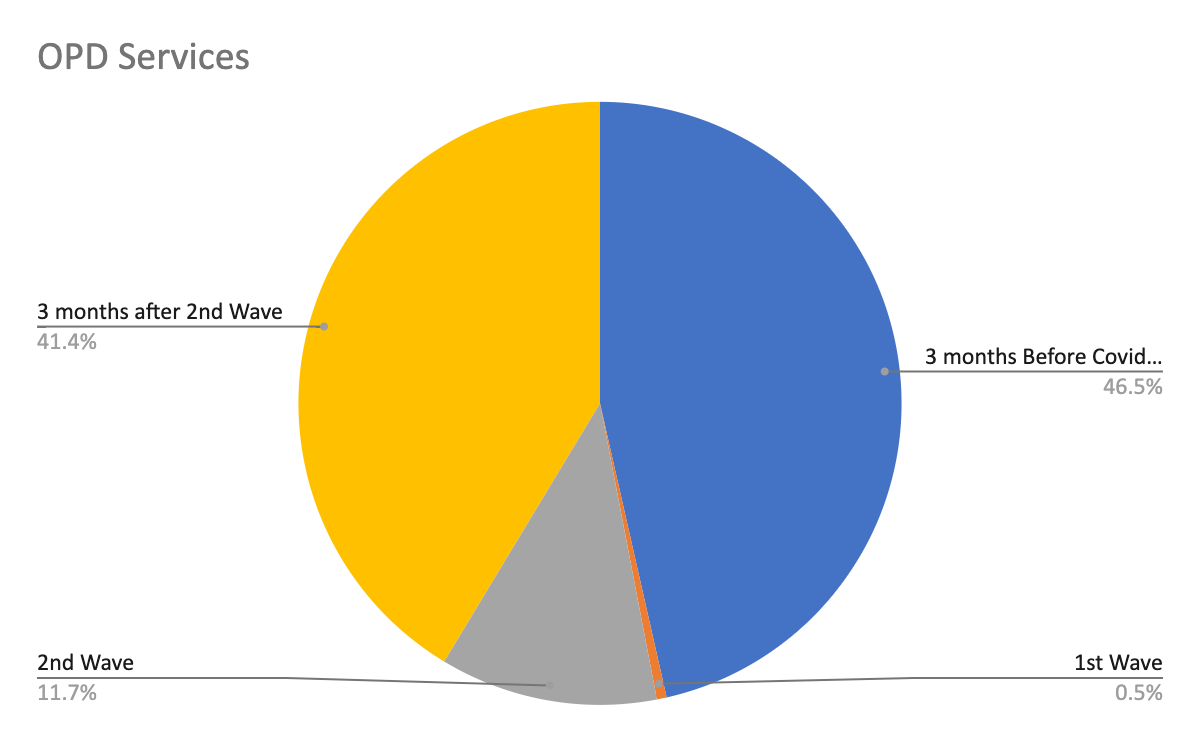
Figure 1.2 Ward Admission in Pre covid, Covid 1st wave phase, Covid 2nd wave phase and Post covid phases.

Figure 1.3 Elective Surgeries in Pre covid, Covid 1st wave phase, Covid 2nd wave phase and Post covid phases.
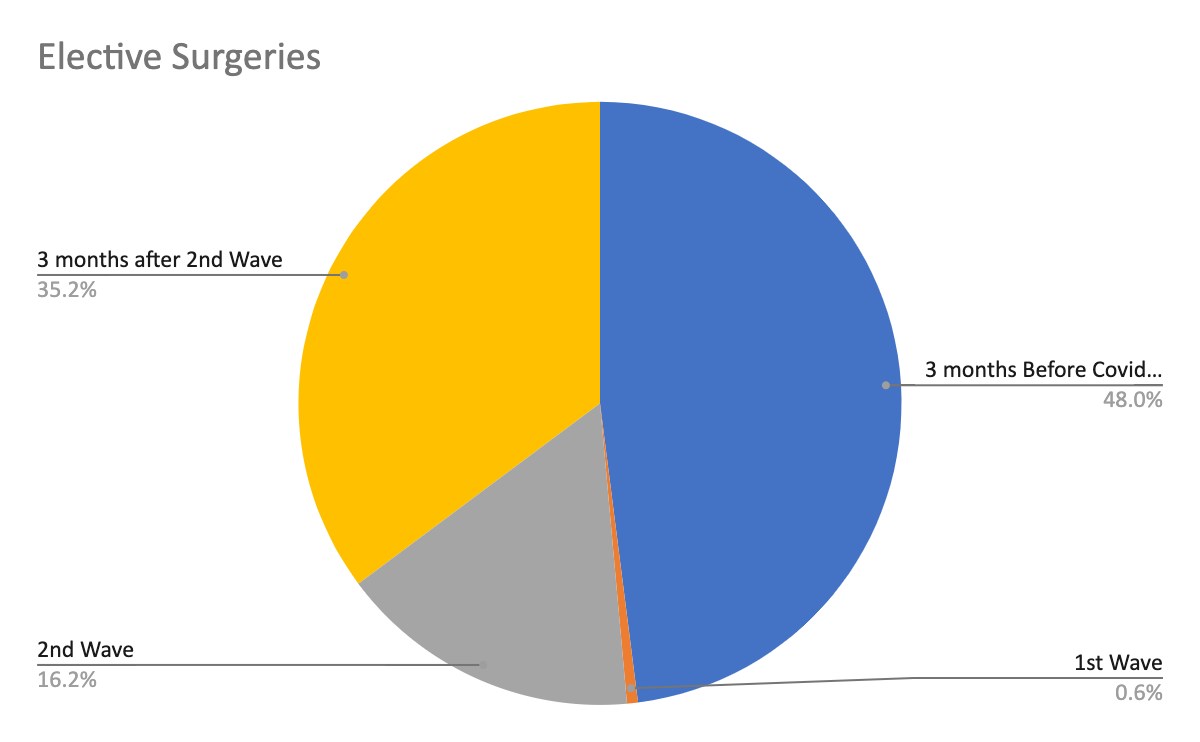
Figure 1.4 Emergency Surgeries in Pre covid, Covid 1st wave phase, Covid 2nd wave phase and Post covid phases.
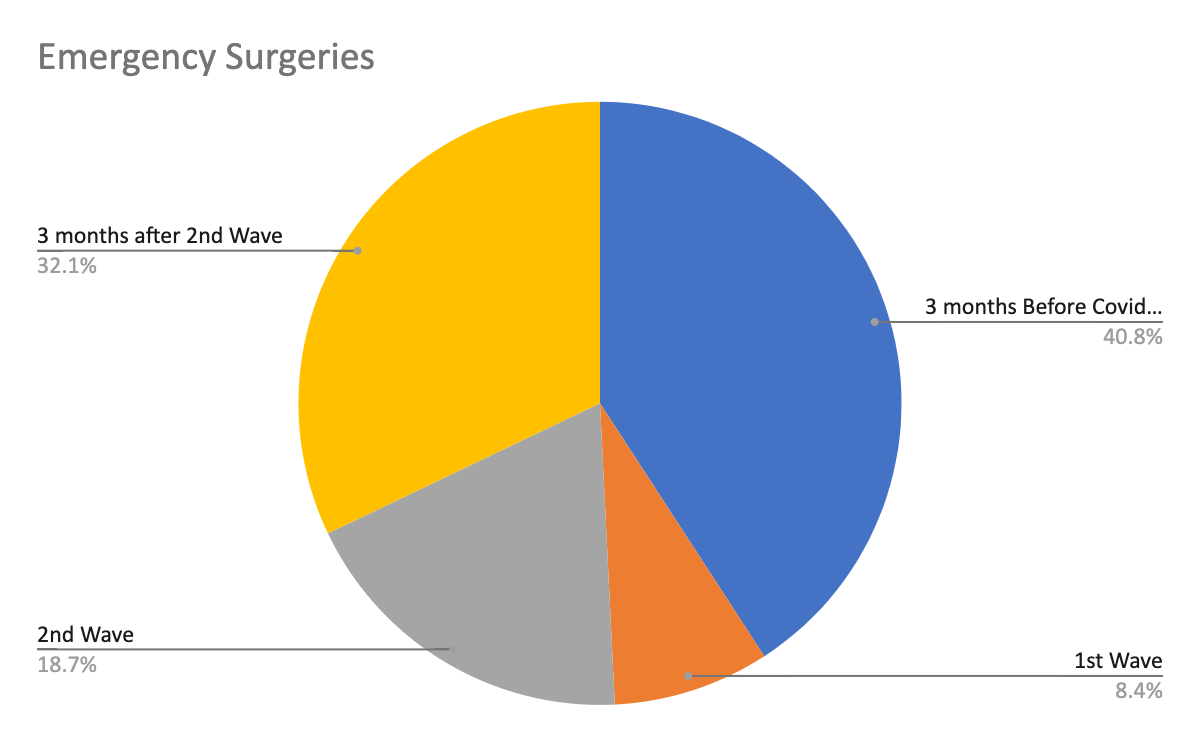
Figure 1.5 Teaching Seminars in Pre covid, Covid 1st wave phase, Covid 2nd wave phase and Post covid phases.
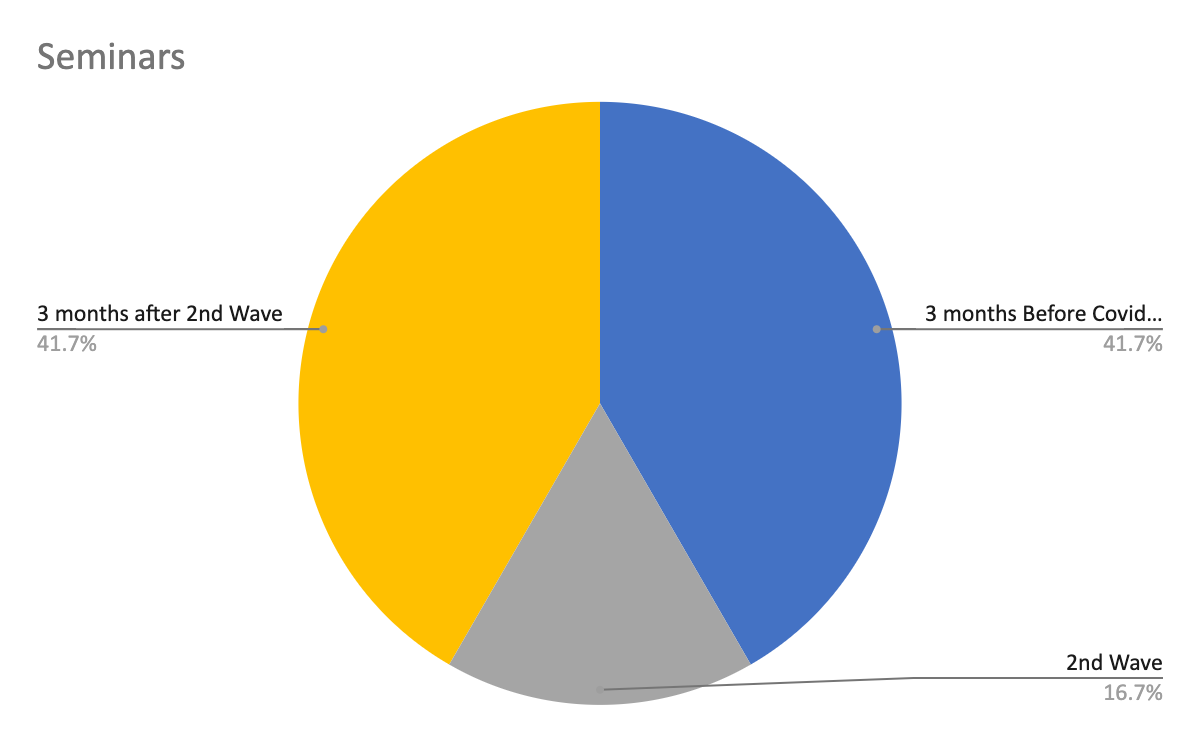
Figure 1.6 Conferences in Pre covid, Covid 1st wave phase, Covid 2nd wave phase and Post covid phases
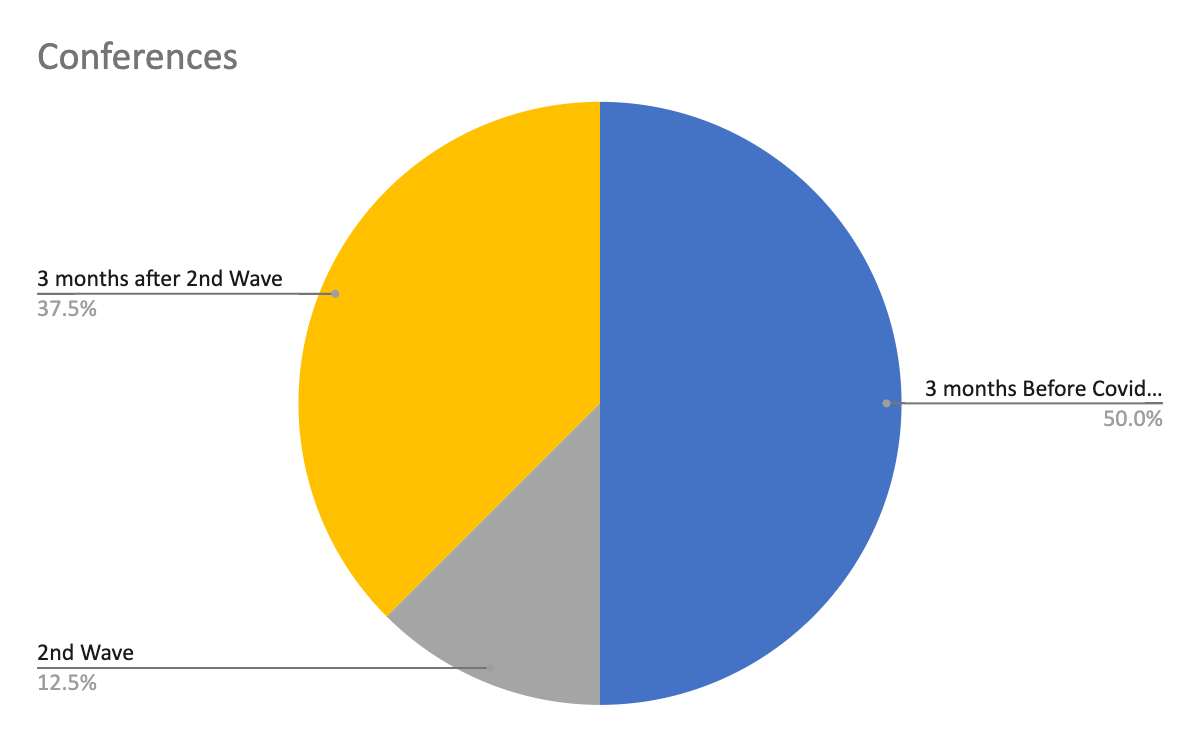
General Surgery Residents Mean Satisfaction Data:
|
Phase (Average of 30 students Answer) |
On Hand Training (Min=1, Max=5) |
Teaching Satisfaction (Min=1, Max=5) |
Perceived Workload Stress (Min=1, Max=5) |
Perceived Mental Stress (Min=1, Max=5) |
Mean (Min=4, Max=20) (Overall Residents Satisfaction) |
|
3 months Before Covid 1st wave |
5 |
5 |
4 |
4 |
18 |
|
1st Wave |
1 |
1 |
1 |
1 |
4 |
|
2nd Wave |
1 |
1 |
2 |
2 |
6 |
|
3 months after 2nd Wave |
4 |
4 |
4 |
4 |
16 |
Table 2.2 Mean Surgery Resident Satisfaction Score in all 4 Covid phases; Based on all 4 answers in all 4 respective phases of all 30 Surgery residents.
Figure 2.1 On Hand Training Satisfaction Score in Pre covid, Covid 1st wave phase, Covid 2nd wave phase and Post covid phases.
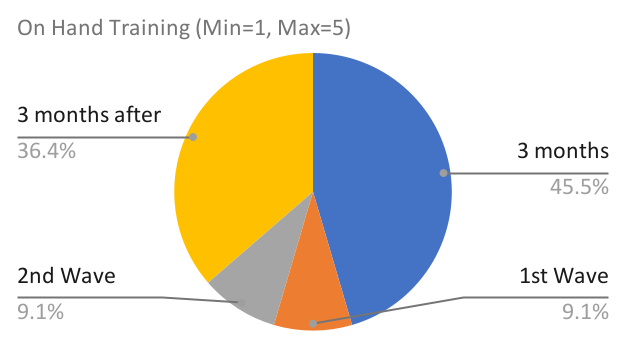
Figure 2.2 Teaching Services Satisfaction Score in Pre covid, Covid 1st wave phase, Covid 2nd wave phase and Post covid phases.
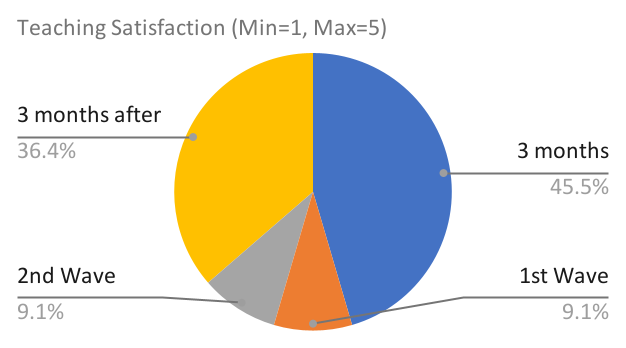
Figure 2.3 Perceived Workload Stress Score in Pre covid, Covid 1st wave phase, Covid 2nd wave phase and Post covid phases.
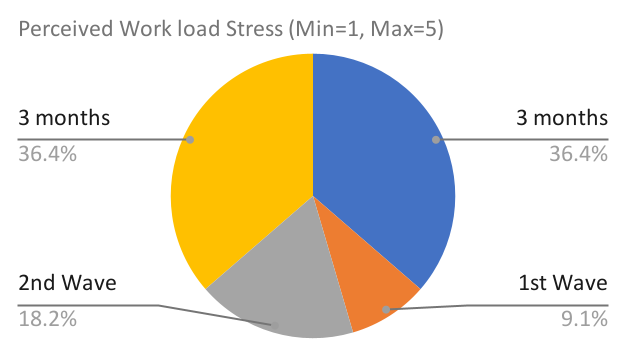
Figure 2.4 Perceived Mental Stress Score in Pre covid, Covid 1st wave phase, Covid 2nd wave phase and Post covid phases.
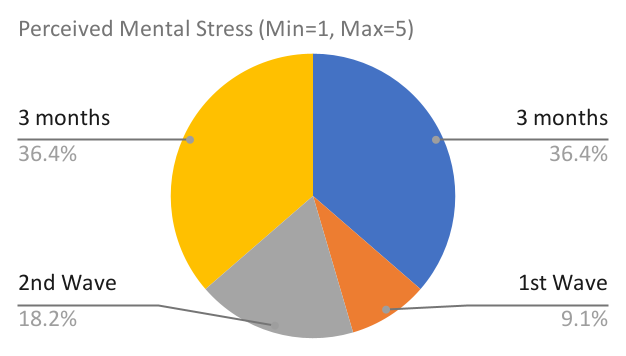
Analysis: There was a significant correlation between Mean Surgery Resident Satisfaction Score in relation to the Surgery & teaching services during Pre covid, Covid 1st wave phase, Covid 2nd wave phase and Post covid phase of JNMCH, AMU, Aligarh, Uttar Pradesh, India, a tertiary care hospital.
|
Phases |
Overall Residents Satisfaction Mean (Min=4, Max=20) |
Elective Surgeries |
Parameter |
Value |
|
3 months Before Covid 1st wave |
18 |
991 |
Pearson correlation coefficient (r) |
0.9707 |
|
1st Wave |
4 |
12 |
P-value |
0.02928 |
|
2nd Wave |
6 |
335 |
Covariance |
2937.6667 |
|
3 months after 2nd Wave |
16 |
727 |
Statistic |
5.7153 |
|
Interpretation |
||||
|
Results of the Pearson correlation indicated that there is a significant large positive relationship between X and Y, (r(2) = .971, p = .029). |
||||
|
|
|
|
|
|
|
Phases |
Overall Residents Satisfaction Mean (Min=4, Max=20) |
Ward Admission* |
Parameter |
Value |
|
3 months Before Covid 1st wave |
18 |
1265 |
Pearson correlation coefficient (r) |
0.9533 |
|
1st Wave |
4 |
25 |
P-value |
0.04673 |
|
2nd Wave |
6 |
562 |
Covariance |
3658.3333 |
|
3 months after 2nd Wave |
16 |
1021 |
Statistic |
4.4622 |
|
Interpretation |
||||
|
Results of the Pearson correlation indicated that there is a significant large positive relationship between X and Y, (r(2) = .953, p = .047). |
||||
|
|
|
|
|
|
|
Phases |
Overall Residents Satisfaction Mean (Min=4, Max=20) |
OPD Services |
Parameter |
Value |
|
3 months Before Covid 1st wave |
18 |
6650 |
Pearson correlation coefficient (r) |
0.9959 |
|
1st Wave |
4 |
75 |
P-value |
0.004113 |
|
2nd Wave |
6 |
1670 |
Covariance |
22426.6667 |
|
3 months after 2nd Wave |
16 |
5921 |
Statistic |
15.5438 |
|
Interpretation |
||||
|
Results of the Pearson correlation indicated that there is a significant large positive relationship between X and Y, (r(2) = .996, p = .004). |
||||
|
|
|
|
|
|
|
Phases |
Overall Residents Satisfaction Mean (Min=4, Max=20) |
Emergency Surgeries |
Parameter |
Value |
|
3 months Before Covid 1st wave |
18 |
365 |
Pearson correlation coefficient (r) |
0.9737 |
|
1st Wave |
4 |
75 |
P-value |
0.02634 |
|
2nd Wave |
6 |
167 |
Covariance |
876.6667 |
|
3 months after 2nd Wave |
16 |
287 |
Statistic |
6.0388 |
|
Interpretation |
||||
|
Results of the Pearson correlation indicated that there is a significant large positive relationship between X and Y, (r(2) = .974, p = .026). |
||||
|
|
|
|
|
|
|
Phases |
Overall Residents Satisfaction Mean (Min=4, Max=20) |
Seminars |
Parameter |
Value |
|
3 months Before Covid 1st wave |
18 |
100 |
Pearson correlation coefficient (r) |
0.9687 |
|
1st Wave |
4 |
0 |
P-value |
0.03127 |
|
2nd Wave |
6 |
40 |
Covariance |
333.3333 |
|
3 months after 2nd Wave |
16 |
100 |
Statistic |
5.5216 |
|
Interpretation |
||||
|
Results of the Pearson correlation indicated that there is a significant large positive relationship between X and Y, (r(2) = .969, p = .031) |
||||
|
|
|
|
|
|
|
Phases |
Overall Residents Satisfaction Mean (Min=4, Max=20) |
Conferences |
Parameter |
Value |
|
3 months Before Covid 1st wave |
18 |
4 |
Pearson correlation coefficient (r) |
0.9878 |
|
1st Wave |
4 |
0 |
P-value |
0.01224 |
|
2nd Wave |
6 |
1 |
Covariance |
12.6667 |
|
3 months after 2nd Wave |
16 |
3 |
Statistic |
8.9567 |
|
Interpretation |
||||
|
Results of the Pearson correlation indicated that there is a significant large positive relationship between X and Y, (r(2) = .988, p = .012). |
||||
Table 3.1 Co-relation between Mean Surgery Resident Satisfaction Score in relation to the Surgery & teaching services during Pre covid, Covid 1st wave phase, Covid 2nd wave phase and Post covid phase.
Conclusion:
Our study highlights the impact of reduced Surgery services-teaching services during the Covid 1st wave phase and the Covid 2nd wave phase to the reduced Surgery resident overall satisfaction levels of JNMCH, AMU, Aligarh, Uttar Pradesh, India, a tertiary care hospital.
Discussion:
Our study questions the need for better Teaching-Training methods of Surgical residents for filling the lacunae in their Training and also to Keep a safeguarded method of Teaching & Training curriculum in future if any further Pandemic arises [15]. Better Surgical training produces better surgical doctors, which requires a better apprenticeship, direct involvement also took a hard hit, which has implications for future surgeons